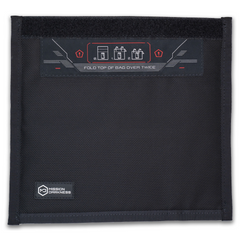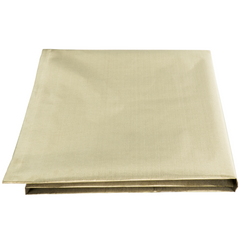The faraday cage or faraday bag, named after the 19th-century scientist Michael Faraday, is an innovative enclosure designed to shield its contents from external electromagnetic fields (EMFs). While faraday bags have gained popularity among law enforcement forensic investigators, tech enthusiasts, professionals, and privacy advocates, numerous myths have also arisen. In this post, we'll address some of the most common misconceptions about faraday bags, setting the record straight.
Myth 1: Faraday Bags Block All Types of Signals and Frequencies
Fact: While faraday bags are designed to block a wide range of EMFs, more specifically in the radio frequencies (RF) range, their effectiveness can vary based on the bag's materials, design, and construction. Some bags might block cellphone signals effectively but might not be as effective against other frequencies. Generally faraday bags block radio frequency signals, such as Wi-Fi, cell, Bluetooth, GPS, etc., although the frequency range varies. Always check the manufacturer's specifications to know which signals a particular bag can shield against.
Myth 2: Any Metal-lined Bag is as Good as a Faraday Bag
Fact: Not all metal-lined enclosures can act as effective faraday cages. The effectiveness of a faraday bag depends on the type of metal used, the weave or mesh density, and its overall design. Simply lining a bag or container with aluminum foil, for example, doesn't guarantee the same protection level as a professionally designed faraday bag, constructed with high-shielding fabrics and an RF-tight closure seal.
Myth 3: Faraday Bags are Only for Tech Professionals
Fact: While professionals in digital forensics, security, and other tech fields may utilize faraday bags, everyday individuals can also benefit from them in various ways. Travelers can safeguard against unauthorized device tracking, ensuring privacy on the go. Meanwhile, the rise of digital thefts, especially through RFID skimming, means that faraday pouches are crucial for protecting credit cards and passports. Additionally, in an age of constant connectivity, these bags can serve as a haven, ensuring undistracted moments by blocking device signals. From safeguarding car keys against signal relay attacks to acting as a precaution against rare electromagnetic pulses, faraday bags are becoming a modern-day essential for everyone.
Myth 4: If It Blocks Cell Signals, It's Effective Against Everything
Fact: Just because a faraday bag blocks cell signals doesn't mean it effectively blocks all other frequencies. Different signals, such as Wi-Fi, GPS, or RFID, operate on different frequencies. It's essential to ensure your bag is lab tested and rated for the specific signals you want to shield.
Myth 5: Faraday Bags Are 100% Foolproof
Fact: While a high-quality faraday bag offers robust protection, no solution is entirely foolproof. Wear and tear, tiny gaps or holes, or not sealing the bag properly can compromise its effectiveness. Regular testing and proper care are crucial to ensure your bag functions as intended.
Myth 6: Faraday Bags Also Protect Against Physical Damage
Fact: While some faraday bags come with padding or reinforced materials that offer some level of physical protection, their primary purpose is to shield against EMFs. If you're concerned about physical damage, ensure you choose a bag that provides both shielding and protective features.
Myth 7: All Faraday Bags Look and Feel the Same
Fact: Faraday bags come in various shapes, sizes, and designs. From sleeves for smartphones to larger bags for laptops, there's a vast array of options. Some are sleek and stylish, suitable for everyday carry, while others are more rugged, designed for tactical use. View the extensive line of Mission Darkness™ faraday bags to find the best bag suited for your device size and needs.
Conclusion
In an increasingly connected world, faraday bags offer a reliable layer of protection against various electromagnetic threats. However, it's crucial to separate the myths from the facts, ensuring you make informed decisions and utilize these tools to their fullest potential. Always conduct your research, consult expert reviews, and, if in doubt, test the bag's effectiveness yourself. Knowledge is the best defense in our tech-savvy age.



